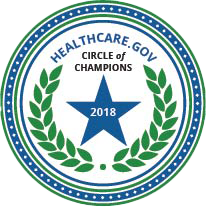How to Avoid Surprises in Medical Billing
Whether it was for an emergency room visit after a fall or a referral to a specialist, we’ve all been hit with a surprise following medical treatment. Surprises are fun, but not when they end up costing you hundreds of dollars. The fear of surprise bills prevents many Americans from seeking medical treatment every day which only causes issues to get worse. Thanks to the Hospital Price Transparency Final Rule that went into effect January 1st, 2021, a hospital must be transparent in their pricing, but that doesn’t mean they have to tell you costs before treatment is administered. Keep reading for advice on how to ensure you don’t get surprised in the weeks following an appointment or hospital visit.

- Know your insurance coverage. Take the time to sit down and review your coverage. Know your copays, your deductible, and what is covered. If you’re confused, contact your insurance company for clarification.
- Know if your physician is in network. When you are referred to a specialist, the referring physician will not check if your insurance will cover that specific doctor. Thanks to the “No Surprises Act” going into effect January 2022, any emergency situation or an out-of-network physician working in an in-network hospital has to be covered by insurance after noted deductibles and copays.
- Know what ambulances are in-network. Look at your specific plan to know what ambulance services are covered and how much. Ground ambulance services are not included in the No Surprises acts. Emergency air life services are included in the new act.
- Pay attention to facility fees. Most hospitals implement a “facility fee” in their billing if your physician’s office is in a hospital as well as emergency rooms. Even if you only leave the ER with a bandaid, you may be hit with a bill for hundreds due to a facility fee. Think of it like a rental fee.
- Shop around for a better price. You heard us right. There are no set prices for medical care. One ER may charge $100 just for entering, while another may charge $600. This doesn’t matter if you have a set copay, but if you pay a percentage before your insurance does it can save you a big surprise when it comes time to pay your bill.
- If you’re referred for testing, ask for a specific in-network office. This goes for bloodwork, imagining, and other tests.
- Research preventative care costs. Many insurance plans will cover 100% of preventative care. This would be yearly physicals, mammograms, colonoscopies, pap smears, stress tests, ultrasounds during pregnancy and more. While the “basics” are covered, newer versions of these tests may not be. This can include 3D imagining and other advanced diagnostic tests. If you’re concerned about the possibility of not having coverage, contact your insurer for a pre approval before testing.
- Request pricing beforehand. If you know you’re going to be going in for a test, let’s use a strep test as an example, you can call ahead of time for the cost. If it costs $100 and your insurance will cover 75%, you know you will pay the copay for the visit (lets say its $30), plus the 25% of the test equaling $55.
Knowing your rights and options for your medical care is extremely important, and so is having excellent insurance to prevent costly surprises. Sean the Insurance Guys is an insurance expert providing residents of Arkansas, Georgia, Indiana, Kentucky, Maryland, Michigan, Minnesota, Montana, New Mexico, North Carolina, Ohio, South Carolina, Tennessee, Texas, Utah, Virginia, Wisconsin, and Wyoming with knowledgeable support and over 10 years of expertise when picking the proper insurance plan for them!
If your insurance isn’t covering enough or you aren’t currently insured, contact Sean the Insurance Guy today for a free consultation on all of your insurance options.











